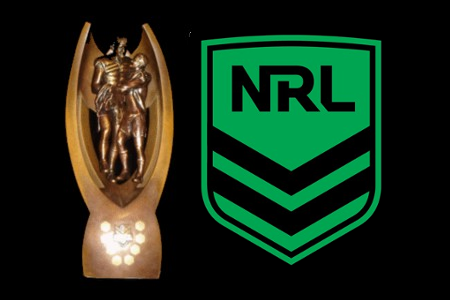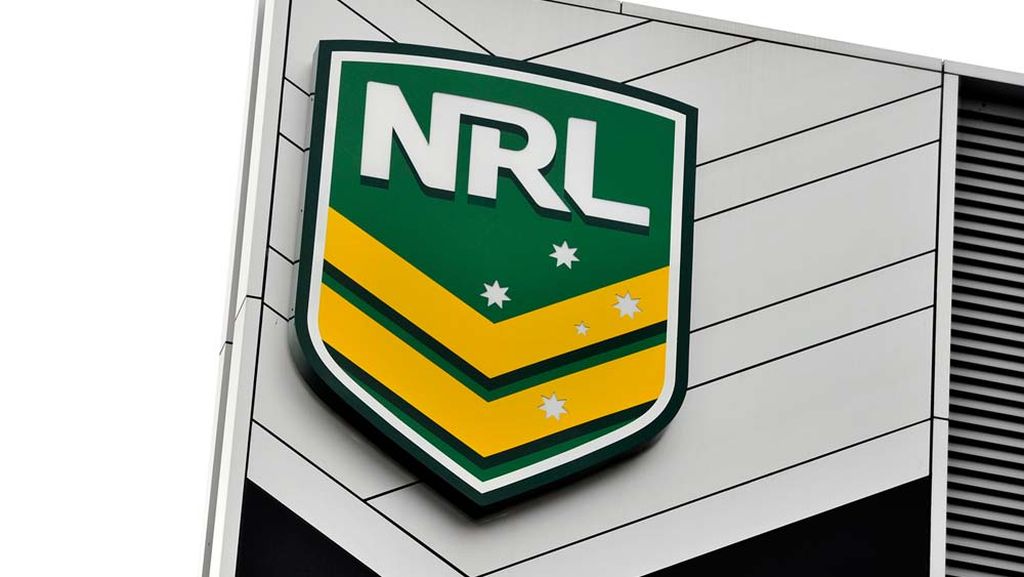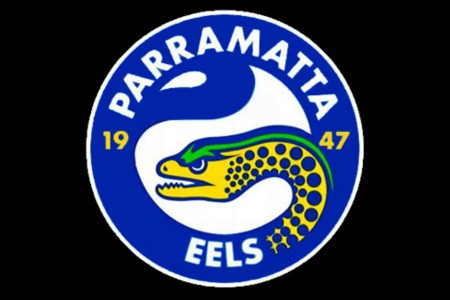Edward Rennix Larkin was a man who is most remembered and revered for his leadership qualities in everything he involved himself. He was a constable in the police force, a journalist, a sergeant in the army, a captain of his Rugby Union club Endeavour, a parliamentarian and the first fulltime secretary of the NSWRL.
Born in Lambton in 1880, his family soon after relocated to Camperdown in Sydney where Larkin attended school at St Benedict’s Broadway, where he showed a glimpse of his future self by being named school captain in 1894. The following year he moved to St Joseph’s at Hunters Hill where he played in the schools Rugby Union team in 1896.
All throughout his schooling days, Larkin was a very adept athlete, showing great proficiency in swimming, Rugby Union, cricket and cycling. He was also equally gifted academically; his place on the Literary and Debating Club for St Joseph’s laid the early platform for his future career as a parliamentarian. Promptly after finishing his schooling he joined the Endeavour Rugby Union club.
In 1903 Larkin married and started a family before joining the Metropolitan Police Force where he was promoted to Constable in 1905. 1903 also saw him appointed captain of the Newtown Rugby Union first grade team. His form throughout the year was stellar and saw him earn representative honours for NSW against Queensland and later against the touring New Zealand side. It was while he was on a train from Sydney to Brisbane, where he was seated with team mates John Maund, Alec Burdon, Denis Lutge and Peter Moir, that it was observed that there were as many NSWRU officials on board as there were players, and according to Maund, they were eating oysters and drinking whisky while the players went without. This was the start of discontent by players against the Rugby Union hierarchy that would continue to simmer for the next few years.
Larkin’s form for NSW was good enough to see him earn a test jumper for the Wallabies, starting as hooker against New Zealand. Larkin’s team mates that day were future Rugby League pioneers and test players Denis Lutge, Bill Hardcastle and Alec Burdon. The Wallabies were soundly beaten 22-3 and wholesale changes meant that Larkin’s test career was over.
By 1906, Larkin was part of a growing number of players who had grown tiresome with the Rugby Union administration for not providing any compensation for lost time due to injuries.
In 1907 the players had had enough and sided with James Giltinan’s proposed rival code, Rugby League. The new code started in 1908, with the season ending in a tour to England.
The tour returned home as a financial disaster. Some players remained in England as there wasn’t enough money to bring them all back. The English Northern Union paid for most of the players return fares.
Edward Larkin’s growing sense of social justice saw him join the Willoughby branch of the Labor Party in 1909.
The NSWRL 1909 season started with a volatile meeting in which NSWRL President Henry Hoyle stood down; Treasurer James Giltinan and Secretary Victor Trumper were sacked amidst allegations lead by Alexander Knox, that the trio had misappropriated funds. Liberal politician Ernest Broughton was appointed President and Larkin the first full-time secretary. Their goal was to try and keep the game alive.
Larkin accepted the position and resigned from the Police force. To show their gratitude, the North Sydney Police gave him a gold chain and the Superintendent’s office gave him an inscribed gold sovereign purse, for his services.
One of the first noticeable changes Larkin introduced was improved advertising of games. Shortly after he began his new role rumours surfaced that Larkin was in talks with South Africa about sending a Rugby League team to Australia.
S George Ball, Bill Flegg, John Quinlan, Horrie Miller and Larkin devised a plan to both promote Rugby League and improve the games financial situation by playing the Rugby Union Wallabies against the Rugby League Kangaroo’s in three matches. The plan would involve the Wallabies being paid so that they were defined as professionals and thus ineligible to play Rugby Union, leaving Rugby League as their only football option available.
Upon hearing of this scheme, NSWRL president Broughton and Alexander Knox were greatly opposed, so much so that Broughton resigned from his post when his demands to cease the scheme were ignored.
Labor politician Edward O’Sullivan took over from Broughton and was more than happy to let the Wallabies coup go ahead. The quintet soon found that the Wallabies pay demands were much higher than they expected and decided to ask entrepreneur and South Sydney Hospital director, James Joynton-Smith, for his assistance to which he agreed.
With negotiations completed the games went ahead, but after the third game there was still a financial shortfall from the purchase of the Wallabies, so a fourth match was planned to be played on the same day as the 1909 final. Knox was publicly scathing of the new administration, but after numerous attacks were foiled, he eventually resigned from the NSWRL board.
Days before the 1909 final, Balmain officials approached Larkin to complain about the schedule to which Larkin suggested that if they don’t play it would be a sign of disloyalty. Balmain refused to take the field on game day, forming a picket line outside the ground. South Sydney was declared premiers. The fourth game between the Wallabies and the Kangaroos went ahead and the season ended with the NSWRL being debt free and with a very small sum of money in the bank.
Due to ill-health O’Sullivan was forced to resign at the end of the season and his place was taken by Joynton-Smith.
The following year, Larkin worked tirelessly to expand Rugby League, especially at grass roots level. He successfully convinced Catholic Schools and the Marist Brothers to adopt Rugby League over Rugby Union in their schools. In his annual report concluding the 1910 season he even revealed that he had begun plans to take the game to the United States.
Larkin became a Justice of the Peace in 1911 and in 1913 he decided he would run for a seat in parliament. He became the first Labor member to win a seat on Sydney’s North Shore when he became the member for Willoughby after a tight election that saw him win 51.61% of the vote in a second ballot.
During his time in parliament, Larkin advocated for a bridge to be built across the harbour. He also forged an agreement with the SCG trust to have Rugby League games played at the SCG. Upon winning, Larkin decided to resign his post as Treasurer, amidst many calls from within the NSWRL for him to stay on in a part-time capacity. He was also a director at the Royal North Shore Hospital, President of the NSW League of Wheelmen and President of the Australian Federal Cycling Council and he was struggling to find the time to fulfill his duties at a level acceptable by his standards.
In 1914, Larkin agreed to serve as interim treasurer of the NSWRL, but his time was cut short by the outbreak of World War I.
The Labor Prime Minister (and former Glebe Rugby League club patron) Billy Hughes, had been working tirelessly to have conscription introduced, however it was vigourously opposed by the majority of parliament and the public.
On August 17, 1914, Edward Larkin enlisted to join the Armed Services. Many of his colleagues urged him not to go, as his leadership abilities would be required on home soil. Larkin enlisted because he felt it was his duty as an athlete and as a leader of athletes to volunteer to serve for the country so as to inspire other athletes to do the same. Some also saw his decision to join as a way of helping to promote more men to join the war effort as soldiers.
Shortly after enlisting, Larkin was promoted to Sergeant. On October 18 he departed for Egypt, where he was prominent in organising Rugby League games amongst the soldiers. In early 1915 while still in Egypt he fell ill and was granted permission to return home. Larkin refused and just weeks later joined the 1st Battalion, which contained his brother Martin, and disembarked for Turkey.
On the first day of battle at Gallipoli, Larkin’s battalion was one of the very first to set foot on shore. His battalion made it to the top of a ridge before they were gunned down by heavy machine gun fire. When approached by the stretcher bearers, Larkin reportedly waved them away and said “There’s plenty worse than me out there.” They later found him dead. His body was so badly mutilated that many soldiers believed he had been tortured, which infuriated the Australians, before they learnt of his true demise. His brother died beside him.
Upon hearing of Larkin’s death, many memorial services were held. His old school, St Joseph’s, held a service followed by a meeting of its officials who decided that a scholarship would be created to put Larkin’s eldest son through school. The scholarship hoped to raise £1,000, with any extra funds to be used to put the children of other former students, who fell at war, through school.
His parliamentarian colleagues also set up a trust fund for his widow and children, which raised enough to pay £180 off his overdraft and £50 to his wife.
The NSWRL also donated a total of £171 to his wife, which were the profits from the City Cup Final of 1915.
A commemorative tablet honouring the fallen MP’s Sergeant Edward Larkin and Lieutenant-Colonel George Braund, was unveiled in November 1915.
There is no known grave for Edward Larkin.
All that remains is a small inscription upon a memorial at Lone Pine, Gallipoli, just metres away from where he died.
Support Andrew Ferguson By Donating To The Rugby League Project Patreon
Follow Rugby League Historian Andrew Ferguson On Twitter
Rugby League Project – The Worlds Leading Rugby League Statistics Website









